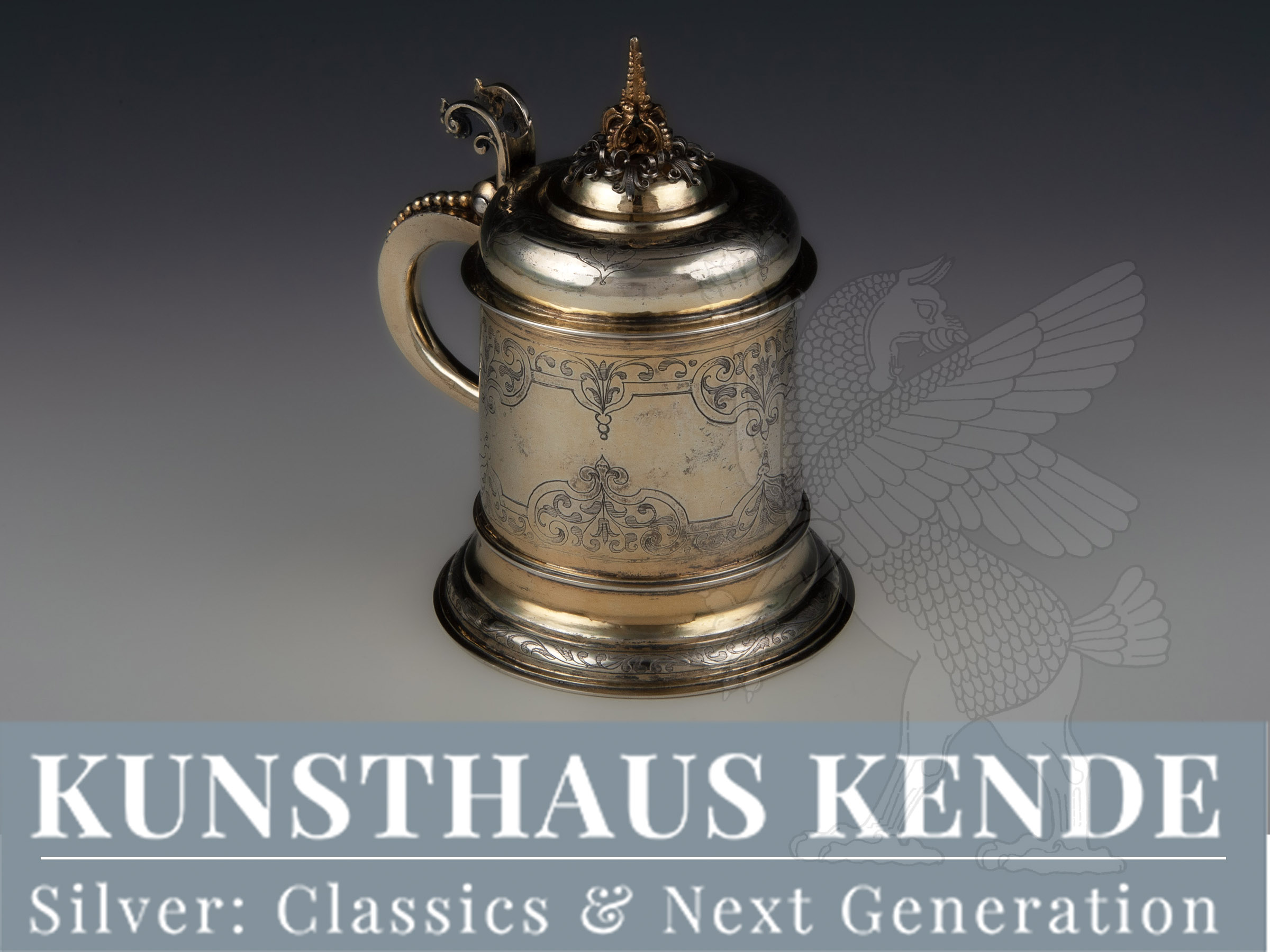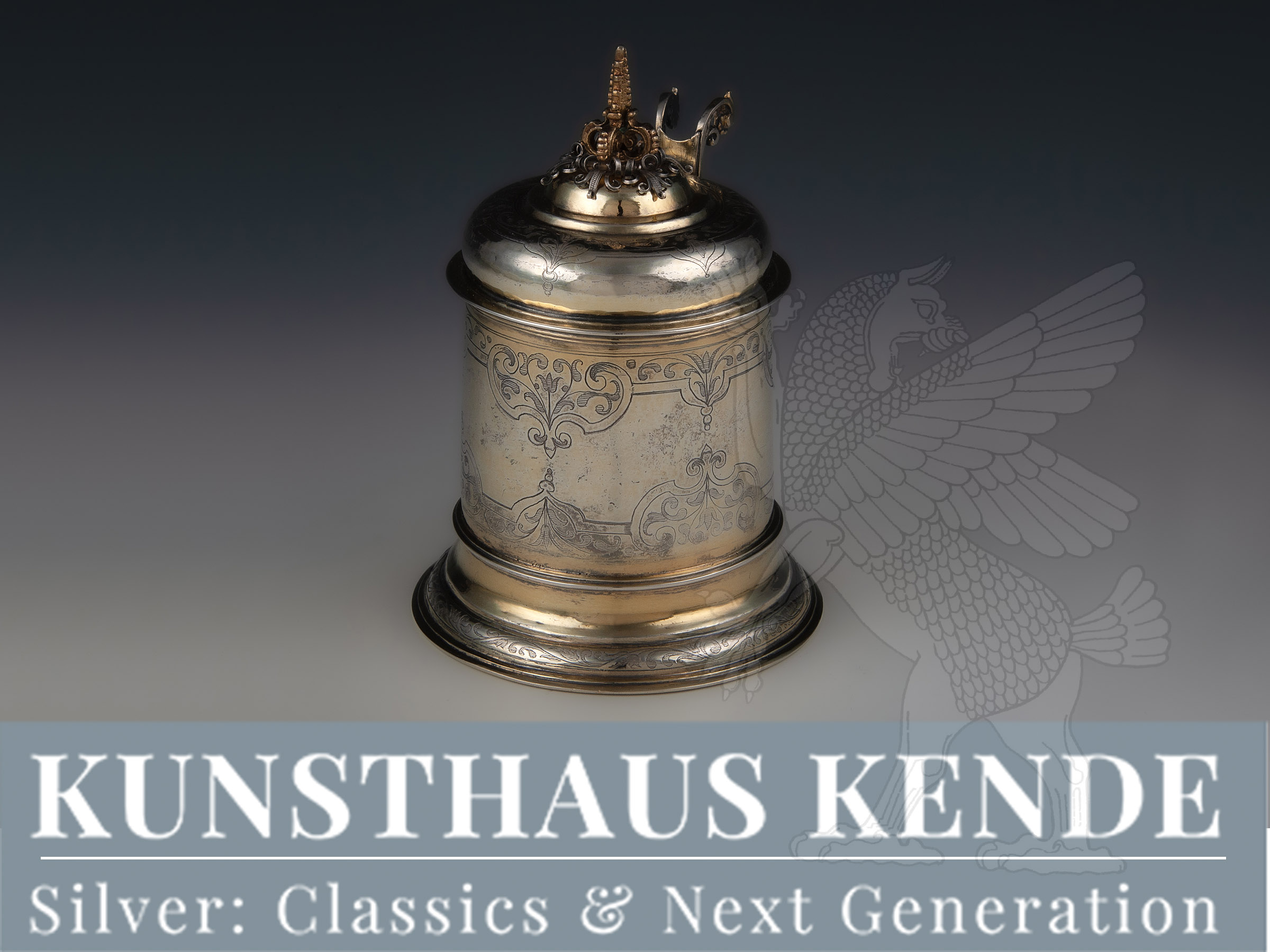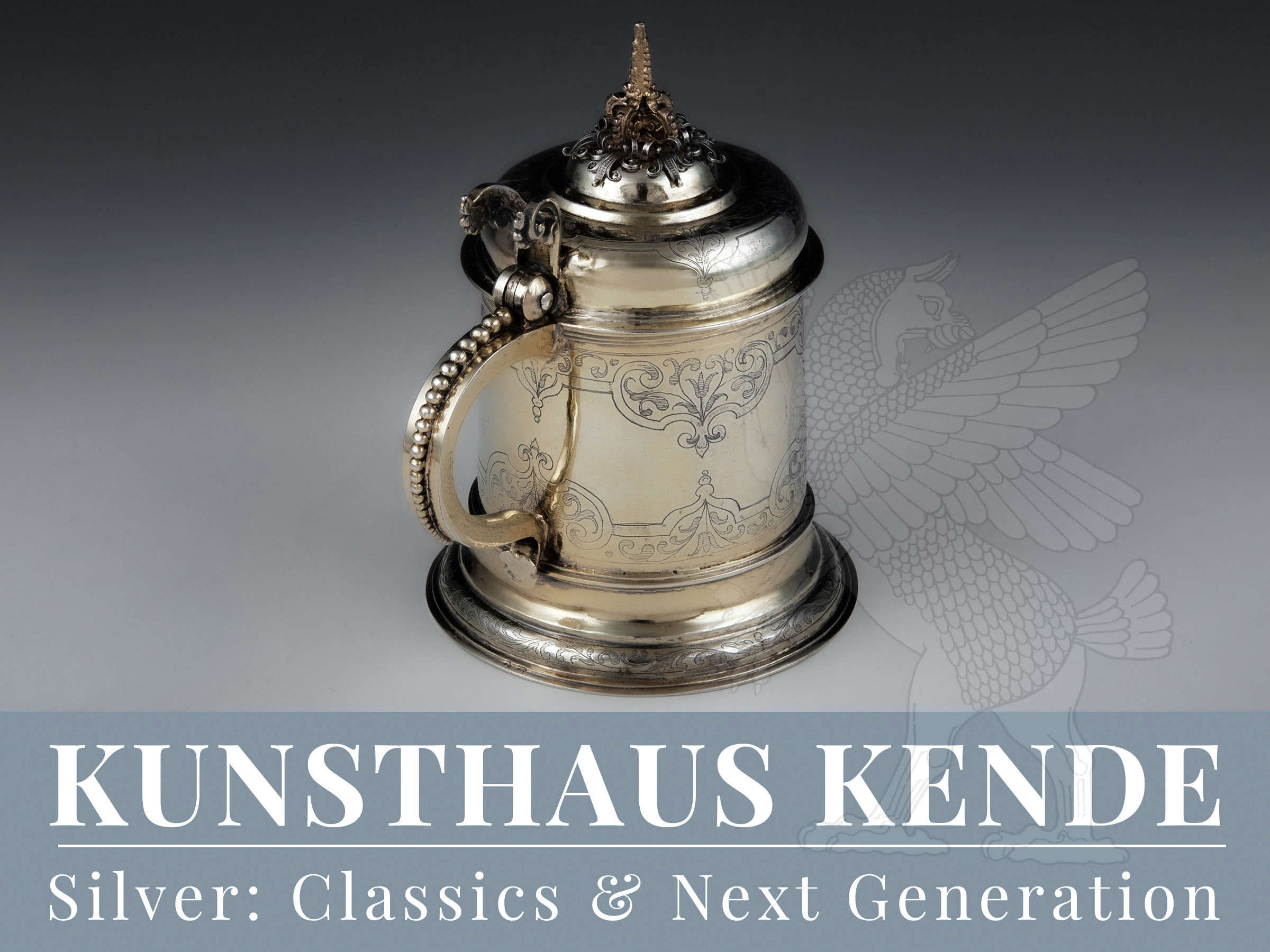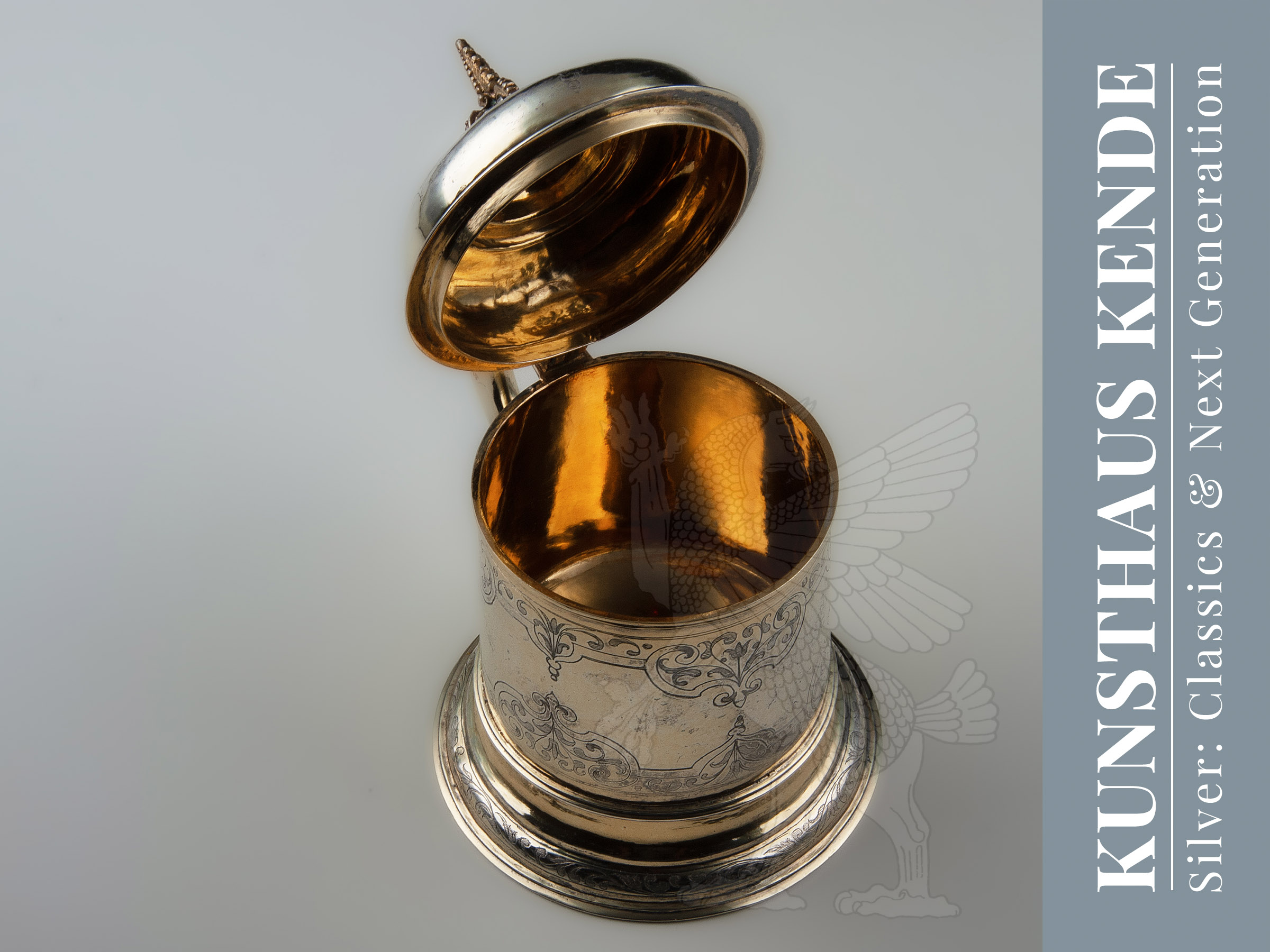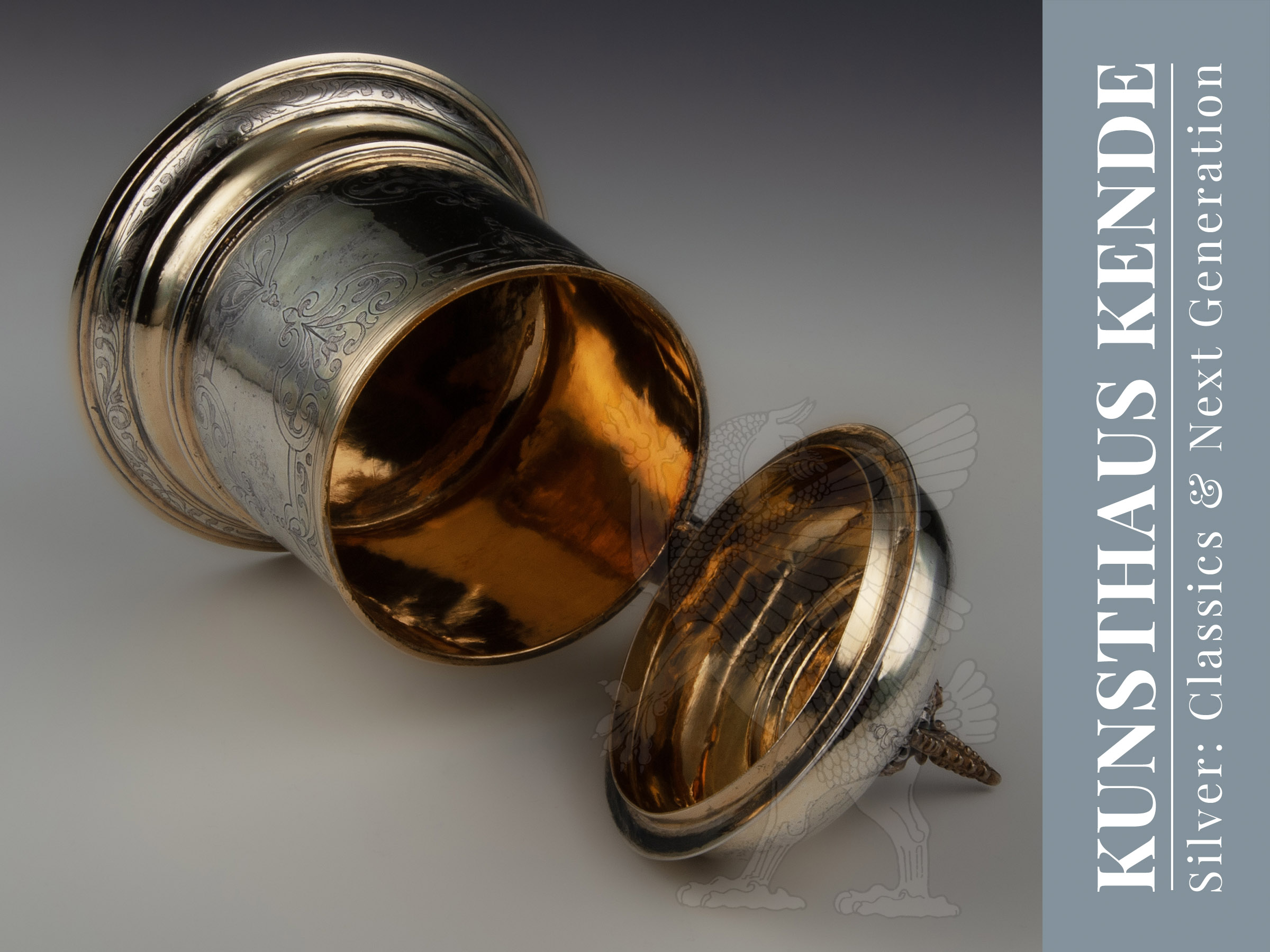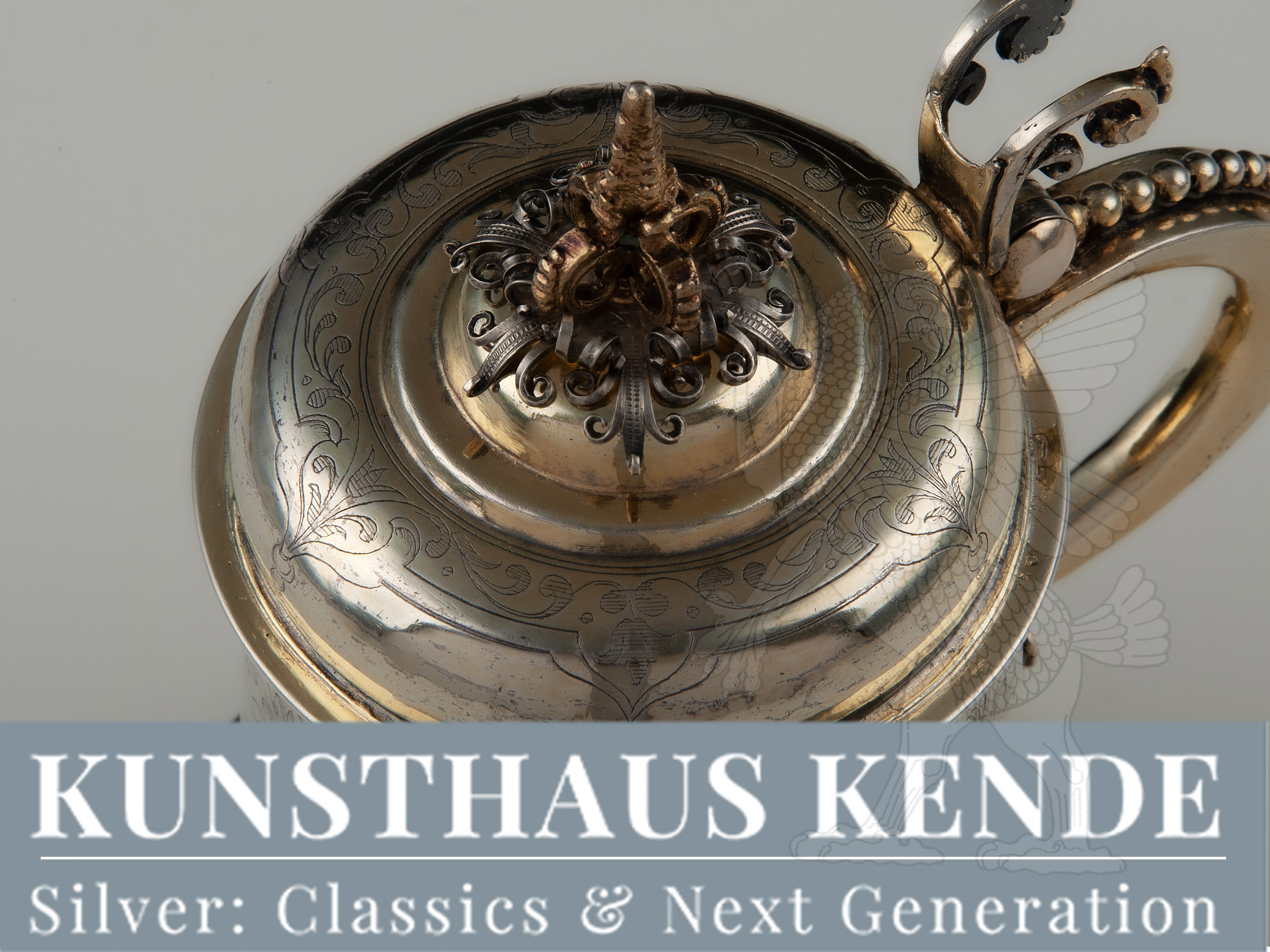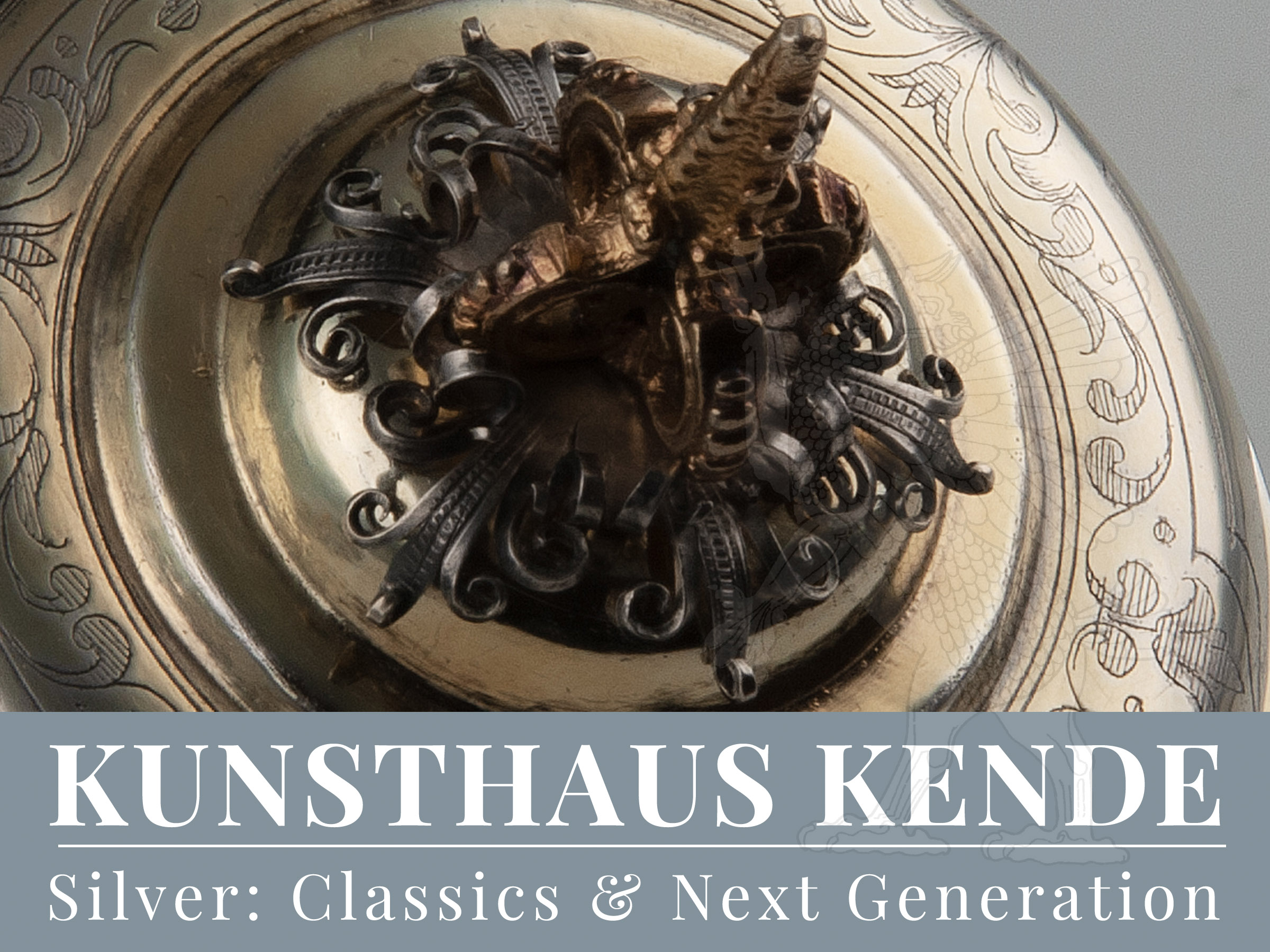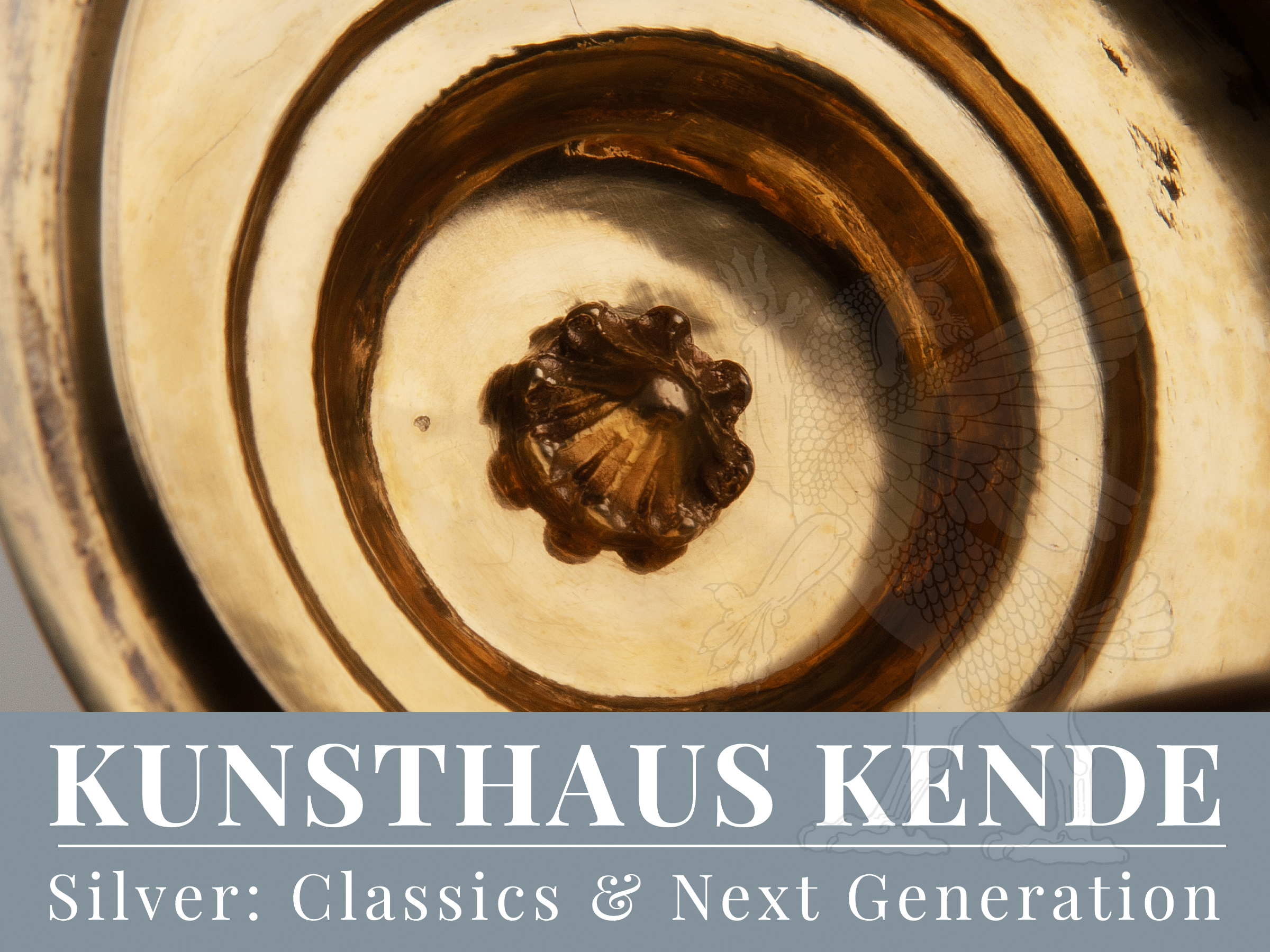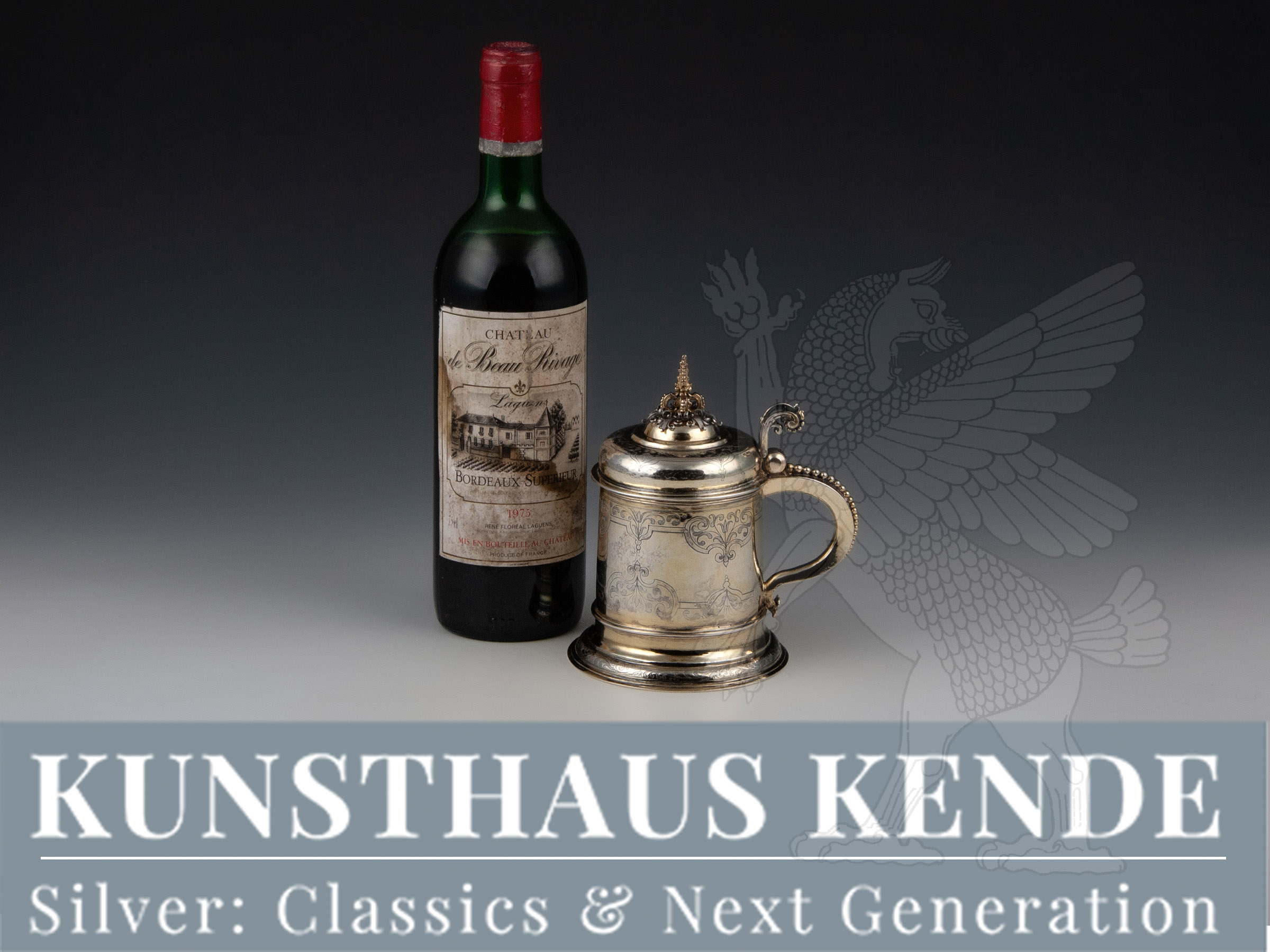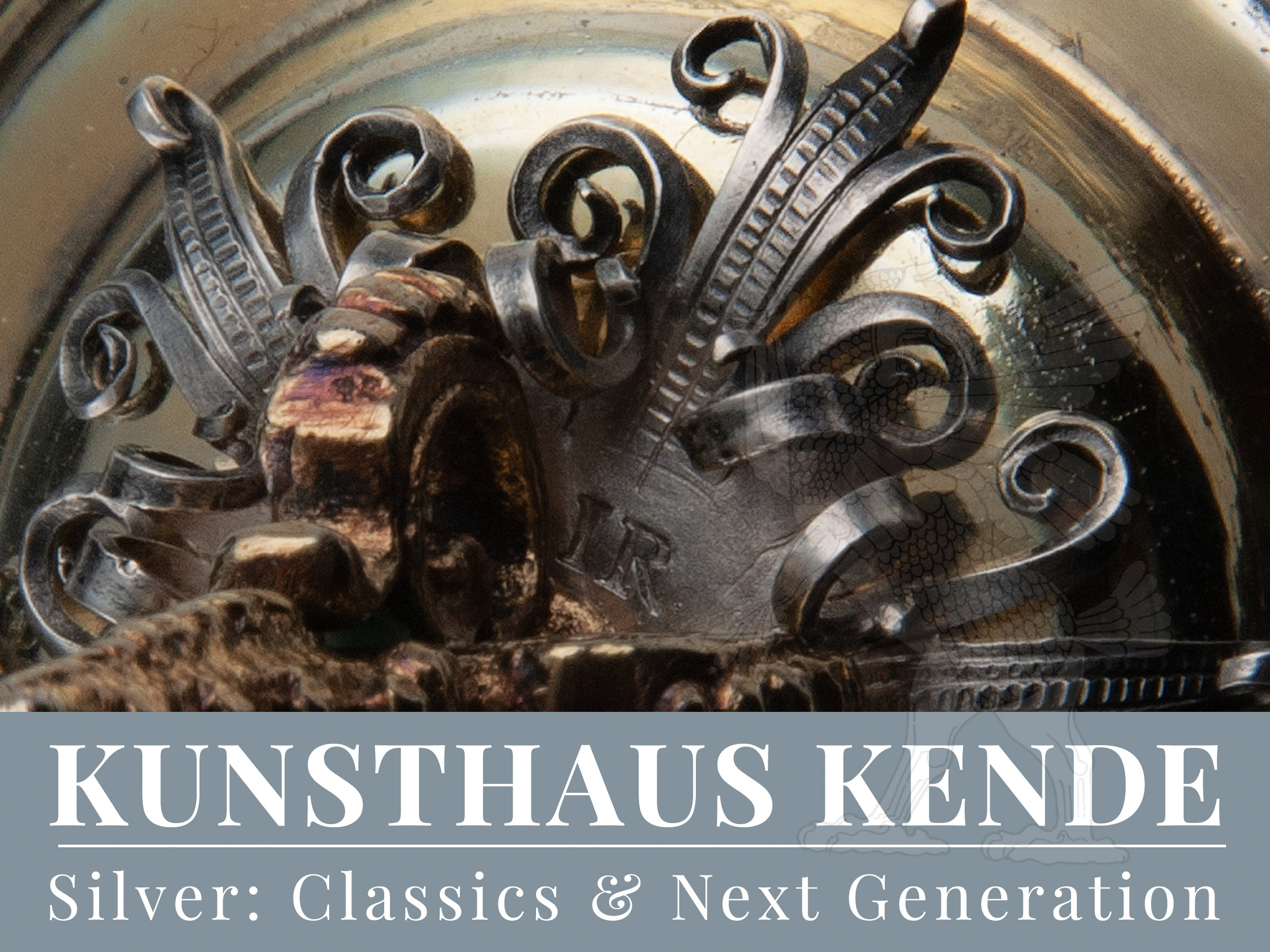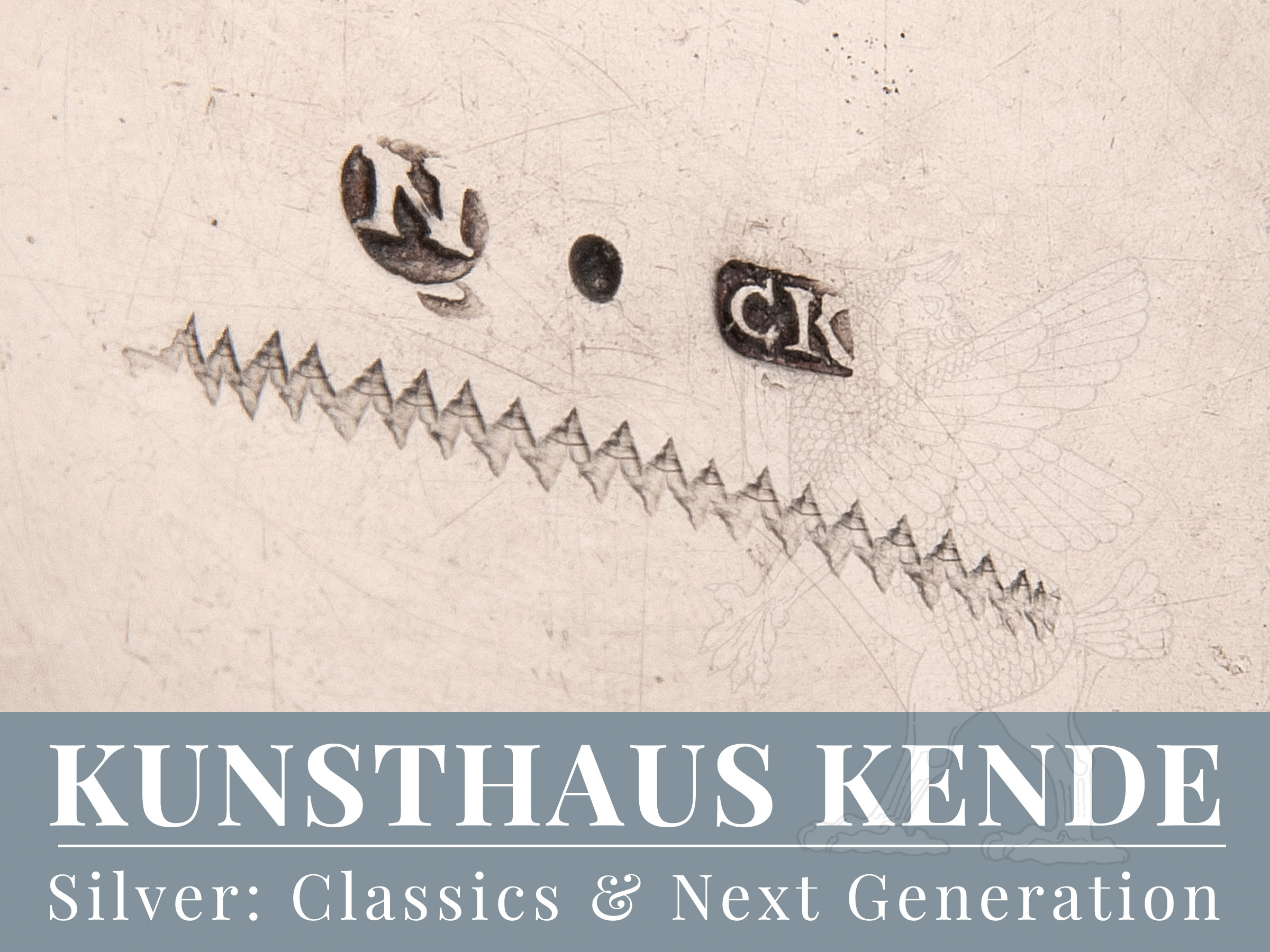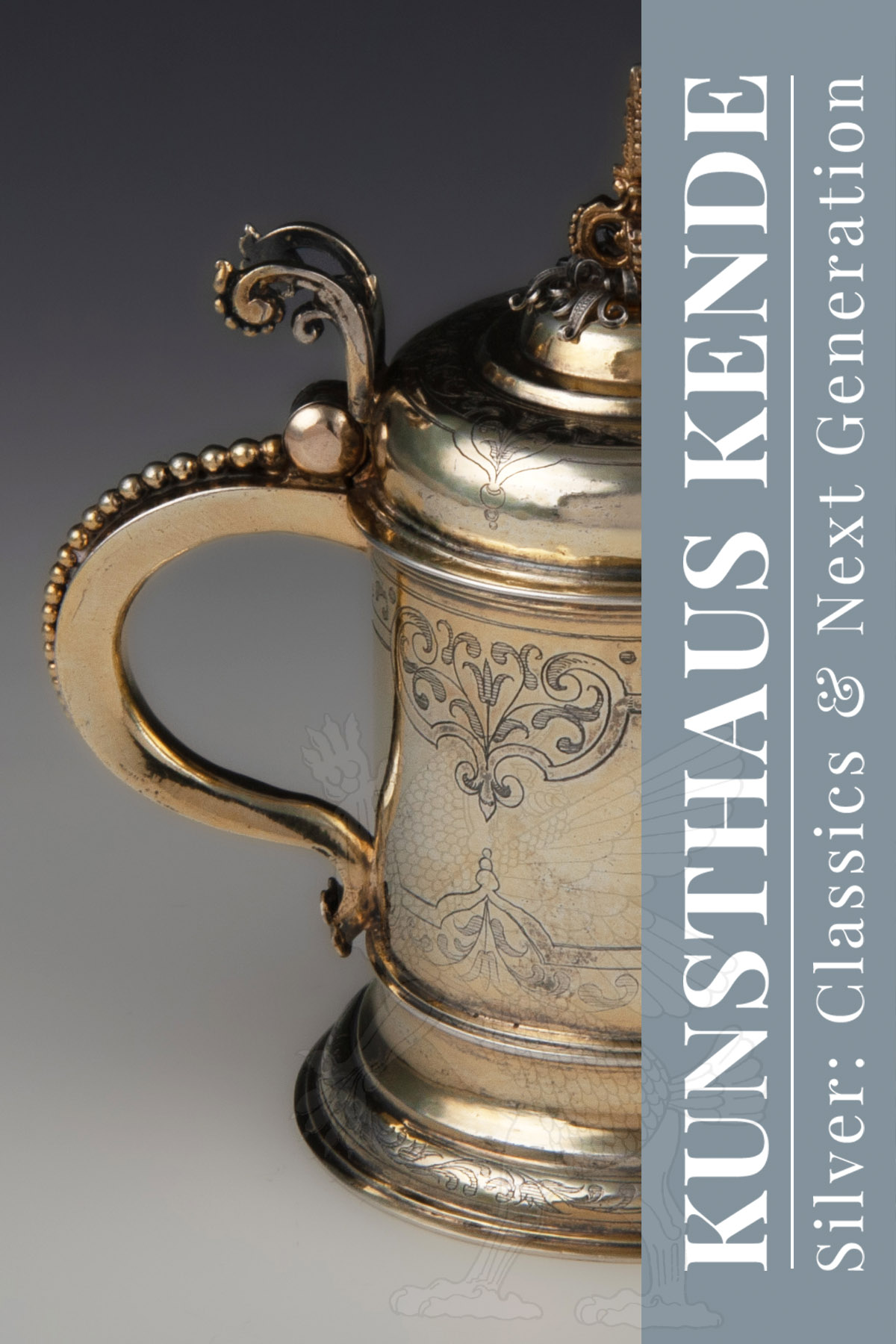Item number: 60188
A late Renaissance silver tankard,
Nuremberg circa 1618-20 by Christoff Kramer
The foot, body and lid decorated with engraved vine decoration in typical Renaissance style. The lid adorned with central floral decoration and crowned by an openwork pointed finial, which is screwed to the lid via a flower-shaped nut. The handle on the back for opening the lid is in the shape of two tendrils. The handle decorated with an attached pearl band, the lower end finished with a coat of arms-shaped shield. The outer surfaces show the original light yellow gilding. The interior re-gilded later, presumably around 1900.
Masterfully crafted, museum-quality tankard from the late Renaissance in excellent overall condition, completely unrubbed engraved decoration and rare size. Particularly noteworthy is the remarkably well-preserved applied floral decoration in sawn and engraved silver filigree, in german the so-called ‘Schmeck’, which shows no broken parts or other damage.
15.1 cm / 5.94″ height (including finial), 10.7 cm / 4.21″ diameter (base), 8.1 cm / 3.18″ diameter (top rim); 309.5 g / 9.95 oz, 0.34 ltr. capacity
The applied Schmeck is a historically interesting detail: In the 17th century, the Nuremberg City Council only authorised two craftsmen to produce these decorations exclusively for the Nuremberg silversmiths without the title of master craftsman. This special licence was linked to the strict prohibition that these two craftsmen add their maker´s marks to their products. On this lidded tankard, the Schmeck is hallmarked in an inconspicuous place, which only becomes apparent on very close inspection.
Christoff Kremer (1569 – 1620) is documented as a silversmith in Nuremberg from 1596 to 1620. In 1594 he married Johanna Steinmann, daughter of the Nuremberg citizen Hans Steinmann. The records of the goldsmiths’ guild show that Kremer, together with other silversmiths, complained that “bunglers” were working illegally as silver flower makers in the Nuremberg suburbs especially in Wöhrd, Mögeldorf and Fürth. He campaigned for a ban on the purchase of such silver flowers by Nuremberg jewellers. In Kremer’s oeuvre, it is mainly vessels with flat grape embossed decorations that have survived, which is why this work also stands out within his oeuvre.
